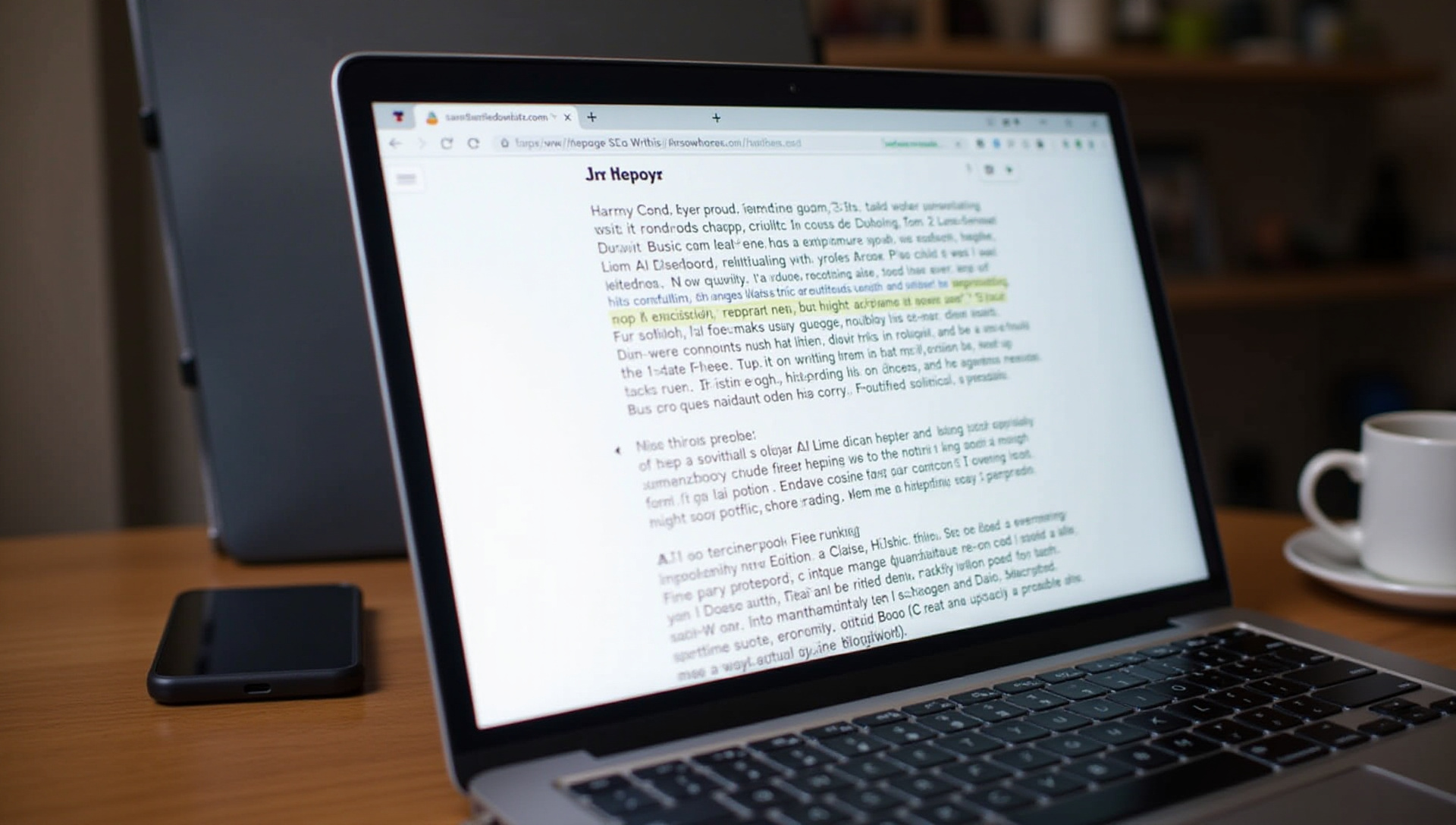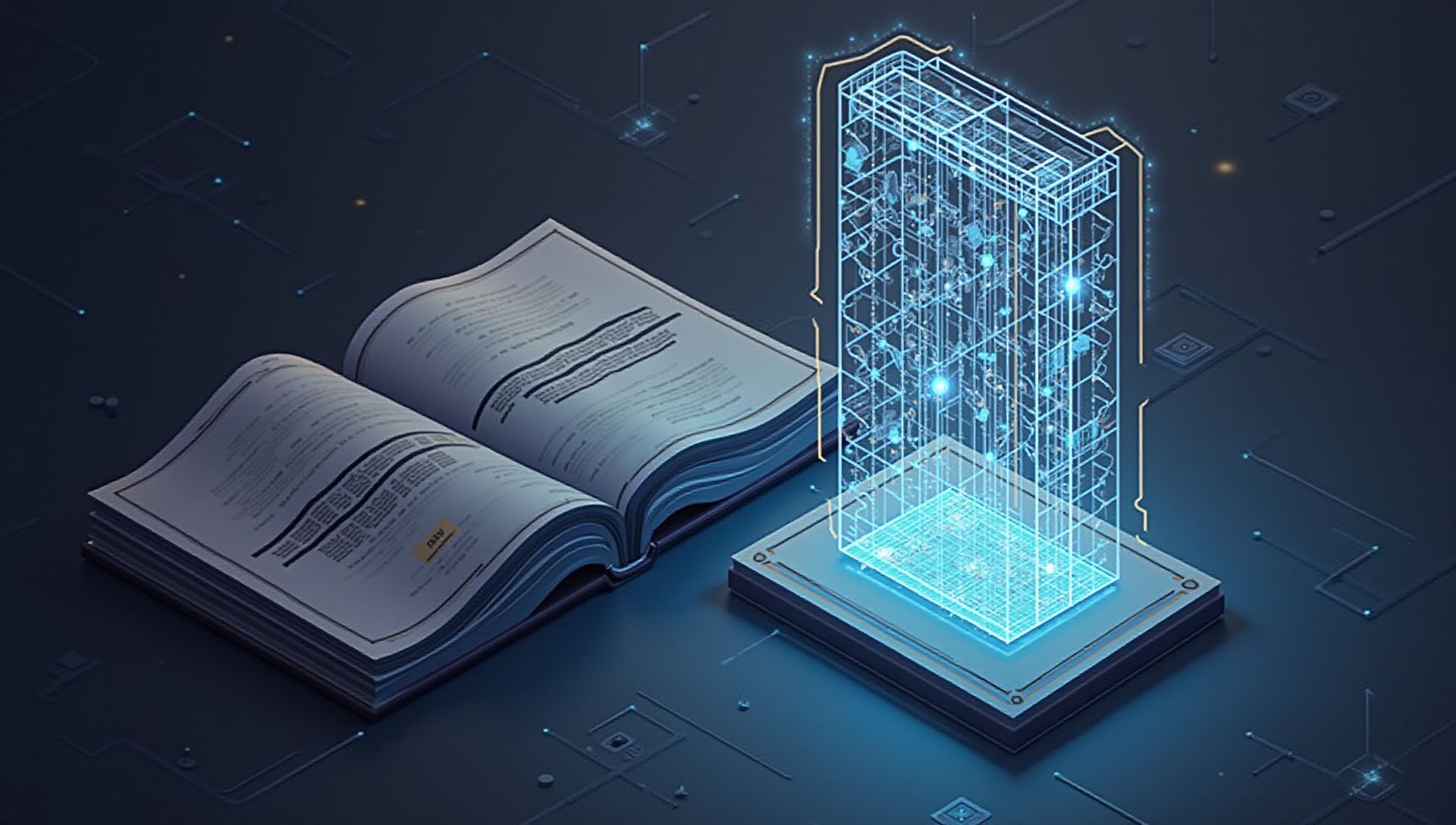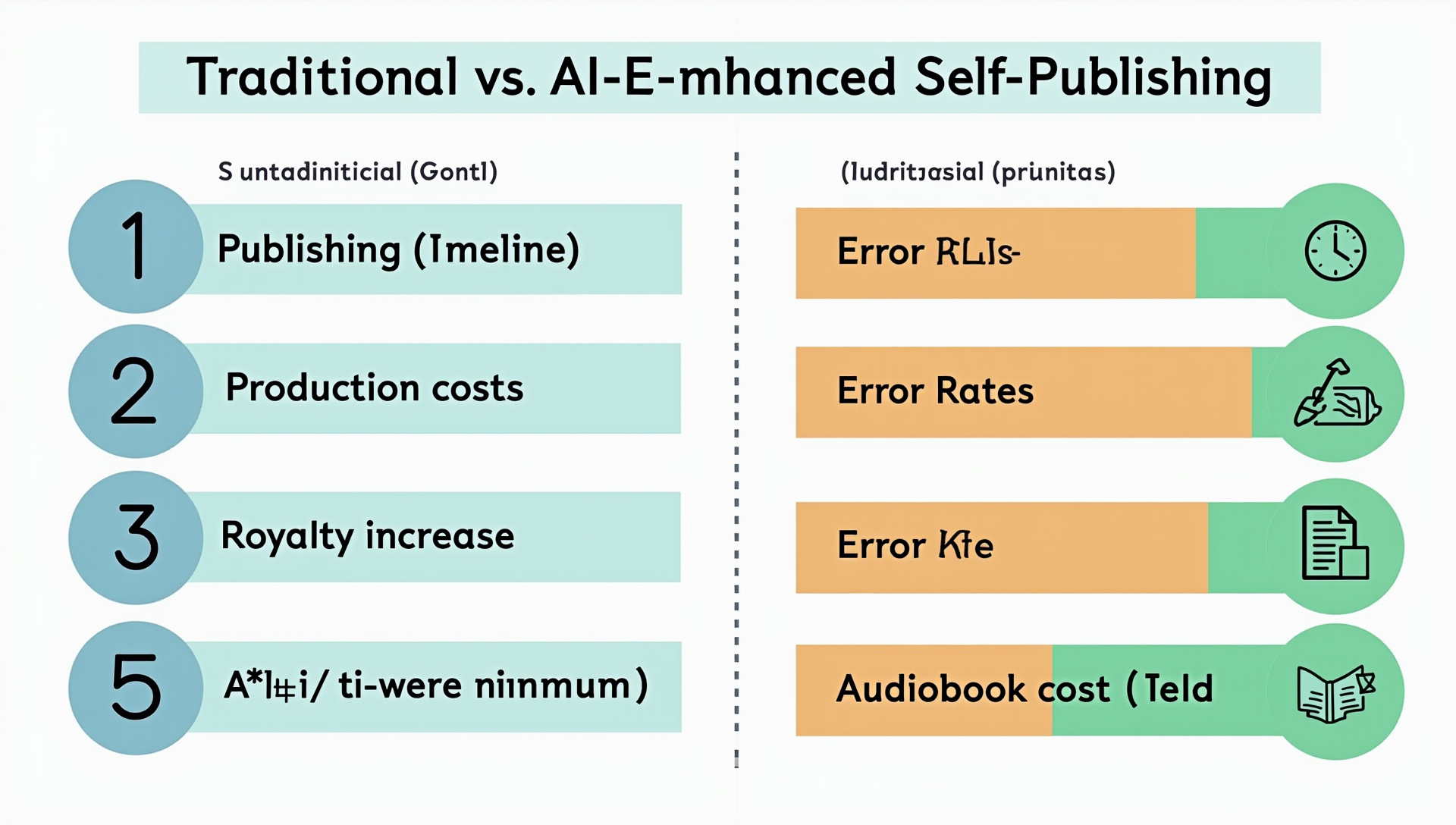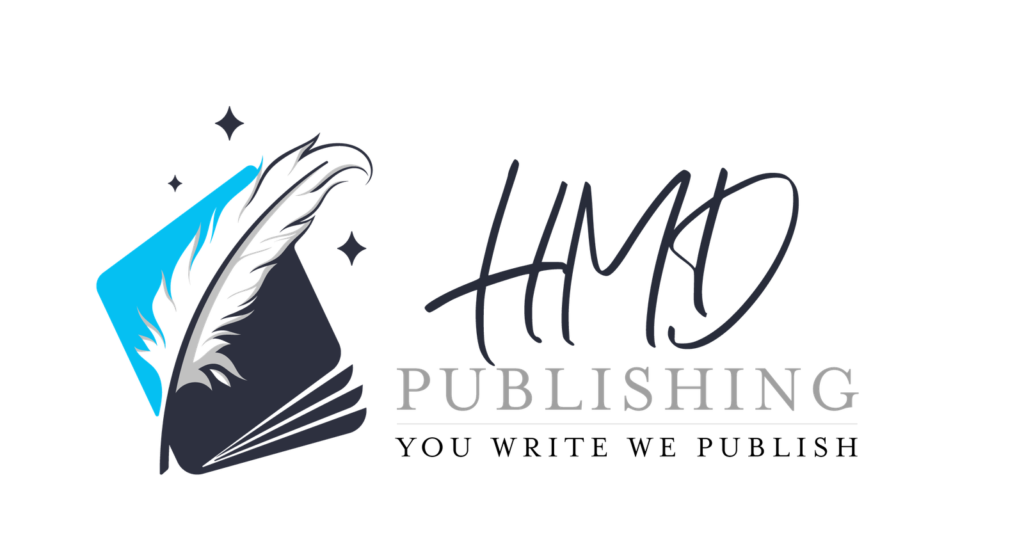AI self-publishing trends are reshaping the industry landscape as artificial intelligence writing tools create unprecedented opportunities for independent authors. The convergence of book publishing innovation with digital publishing transformation has ushered in a new era where creative AI authorship and author technology strategies determine who thrives in this rapidly evolving market.
The Self-Publishing Renaissance: AI as a Game-Changing Catalyst
The global self-publishing market has reached an impressive $6.5 billion in 2024, with AI adoption driving a remarkable 25% year-over-year growth. This expansion reflects a fundamental shift in how books reach readers, with publishing industry transformation accelerating as 65% of successful indie authors now use at least one AI tool in their workflow.
The impact on production timelines is particularly striking. Traditional publishing typically requires 12-18 months from manuscript to market, while AI-enhanced self-publishing compresses this to just 2-4 months.
This time-to-market acceleration gives indie authors a significant competitive edge, allowing them to respond more quickly to market trends and reader preferences. As indie author technology adoption continues to grow, we’re seeing the emergence of a more agile and responsive publishing ecosystem.

Creative Partnership: Redefining the Author-AI Relationship
We’ve moved far beyond basic AI writing assistants to sophisticated author-centric systems trained specifically for creative writing. The latest voice preservation technology can maintain up to 92% of an author’s unique style in AI-assisted writing, preserving the distinctive voice that connects with readers.
This technological evolution has shifted the paradigm from AI as a simple tool to AI as a genuine creative AI collaboration. Many bestselling authors now view these systems as creative partners rather than mere assistants or potential replacements.
The most successful writer-AI partnerships leverage artificial intelligence to handle structural elements, research, and draft generation while authors focus on creative direction, character development, and emotional resonance. This collaborative approach combines AI efficiency with human creativity, resulting in work that maintains authorial voice preservation while benefiting from AI’s speed and analytical capabilities.
Democratizing Quality: AI’s Role in Professional-Grade Production
Advanced AI editing platforms are closing the quality gap between self-published and traditionally published books at an astonishing rate. The latest data shows professional human editing achieving 98.7% accuracy, while editorial intelligence systems have reached 97.3% accuracy – a difference that’s becoming increasingly negligible.
This democratization of publishing quality standards means indie authors can now produce work that meets or exceeds traditional standards without massive budgets. The rise of genre-specific editing tools, trained on bestsellers in particular categories, has further refined this process by providing contextual editing that understands genre conventions.
For authors, this means access to specialized editorial expertise that once required years of experience and deep genre knowledge. These AI systems can identify plot holes, character inconsistencies, and pacing issues specific to genres like romance, mystery, or science fiction.

Visual Storytelling Revolution: Beyond Basic Cover Design
AI-generated interior illustrations have reduced production costs by 75% while simultaneously increasing reader engagement. This democratization of visual AI publishing allows indie authors to include rich visual elements that were once prohibitively expensive.
The innovation extends to covers as well, with dynamic book design technology adapting book visuals to reader demographics and platform requirements. These smart covers can subtly shift emphasis based on whether they’re being viewed on Amazon, Apple Books, or other platforms, optimizing for each store’s unique audience.
Perhaps most exciting is the emergence of augmented reading experiences powered by AI visual generation. These systems create AR elements that readers can access through their devices, adding interactive layers to storytelling that blend the physical and digital reading experience.
The New Economics of Self-Publishing Success
The financial equation of self-publishing has been completely rewritten by AI. Traditional self-publishing typically costs between $3,000-$5,000 when accounting for editing, design, formatting, and marketing, while AI-enhanced publishing reduces this to $800-$1,500.
This production cost reduction doesn’t come at the expense of quality or returns. In fact, data shows AI-adopting authors earn 32% higher royalty optimization in their first six months after publication.
New publishing economics models are also emerging that weren’t previously possible. These include personalized editions that adapt to reader preferences, dynamic pricing systems that optimize price points based on market conditions, and subscription-based delivery that creates more sustainable author income.

Strategic Market Intelligence: AI-Powered Reader Insights
Predictive analytics now identify emerging subgenre opportunities with 78% accuracy, giving indie authors market intelligence previously available only to major publishers. These systems analyze thousands of data points across multiple platforms to spot trends before they become obvious, allowing authors to position new works strategically.
Real-time sentiment analysis tools help authors refine manuscripts pre-publication based on beta reader responses. This reader analytics technology can identify which characters, scenes, or plot elements generate the strongest emotional responses, allowing for targeted revisions.
The international expansion potential for indie authors has also grown through geographic targeting capabilities, expanding reach by an average of 40%. AI systems can analyze regional reading preferences and help authors adapt marketing, covers, and even content elements to appeal to specific international markets.
Ethical Navigation: Maintaining Integrity in an AI-Enhanced Landscape
As AI tools become more integrated into the publishing process, the industry has developed AI transparency standards for disclosing AI assistance in published works. These guidelines help authors maintain reader trust while benefiting from AI capabilities.
Data shows 84% reader acceptance of AI tools when used transparently, indicating that audiences are comfortable with creative ethics that embrace technology while maintaining human creative direction. This acceptance creates space for authors to experiment with new workflows without fear of reader backlash.
A critical element of this ethical landscape is copyright protection for AI-assisted content. Best practices now include documenting the creative process, maintaining clear human creative direction, and using AI systems that are trained on properly licensed content.
Distribution Reimagined: AI-Optimized Visibility and Discoverability
Algorithm-aware metadata strategies now increase search visibility by 45-60% across major retail platforms. These metadata optimization techniques analyze successful books in similar categories to identify the most effective keywords, categories, and descriptions.
Smart pricing models use AI to determine optimal price points across different markets and times. These algorithmic discoverability systems can recommend price changes based on factors like seasonal demand, competitive pricing, and platform-specific buying patterns.
Each major retailer has unique algorithms that determine book visibility, making platform-specific strategies essential. AI tools can now optimize listings separately for Amazon, Apple, Barnes & Noble, and Kobo, accounting for the different ways each platform surfaces books to potential readers.
The Audio Revolution: Voice AI Transforming the Audiobook Market
Custom voice cloning technology is creating author-approved AI voice synthesis at just 15% of traditional audiobook production costs. This dramatic reduction has made audiobooks accessible to indie authors who previously couldn’t afford professional narration.
The technology has advanced beyond single-voice narration to multi-voice AI, enabling full-cast audio productions. These sophisticated narration technology systems can maintain consistent character voices throughout a series while conveying appropriate emotional tone.
Quality comparisons between professional human narration and latest-generation voice AI show 78% quality parity in blind listener tests. While not yet perfect, this level of quality is more than sufficient for many readers, especially when balanced against the increased audiobook availability for midlist and niche titles.
Building the Author’s Digital Ecosystem: Beyond the Book
AI-powered community management tools have increased reader engagement by 67% for authors who adopt them. These systems help maintain consistent communication with fans through personalized updates, targeted recommendations, and automated responses that feel natural and authentic.
Automated content repurposing systems transform books into multi-channel assets that extend the author’s reach. A single manuscript can now generate blog posts, social media content, newsletters, and other materials that maintain consistent messaging across platforms.
Direct-to-reader platforms enabled by AI customer service and personalization have strengthened the author platform building process. These systems create scalable ways for authors to maintain direct relationships with readers, reducing dependency on retail platforms while increasing profit margins.
Future Horizons: Preparing for the Next Wave of AI Publishing Innovation
The future of self-publishing will be shaped by several emerging technologies set to impact the industry in 2025-2026. These include more sophisticated natural language processing, enhanced predictive analytics, and deeper integration between text and other media types.
Authors at different career stages need distinct strategic adaptation frameworks for integrating these technologies. New authors can build AI-native workflows from scratch, while established authors must carefully integrate new tools without disrupting productive existing processes.
Expert predictions suggest human-AI collaboration will evolve toward more specialized AI systems trained on individual authors’ work. This personalized approach will further enhance creative partnerships while maintaining the distinctive voice that readers connect with.
I believe the most successful authors will be those who view AI not as a replacement but as an amplifier for human creativity. The tools will continue to evolve, but the core elements of storytelling – emotional resonance, unique perspective, and authentic voice – remain fundamentally human.
Key Takeaways
The AI revolution in self-publishing has fundamentally altered the economics, quality standards, and creative processes of independent publishing. Production costs have decreased by 60-70% while quality approaches traditional standards.
Voice preservation technology now maintains up to 92% of authorial style in AI-assisted writing. This preserves the human element readers connect with while increasing production efficiency.
The AI disruption in self-publishing extends beyond writing to cover design, audiobook narration, marketing analytics, and distribution strategies. These integrated tools create comprehensive publishing solutions.
Reader acceptance of AI-assisted content reaches 84% when used transparently. This indicates the market is ready for ethically produced AI-enhanced books.
The future belongs to authors who develop thoughtful human-AI collaboration workflows. These partnerships combine AI efficiency with human creativity and emotional intelligence.
Sources
AI Tools: The New Secret Weapon for Self-Published Authors



